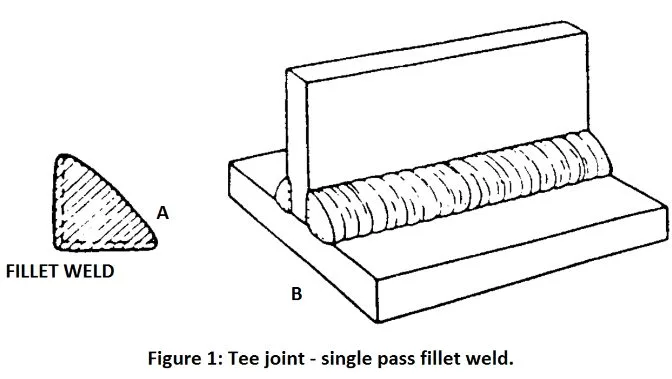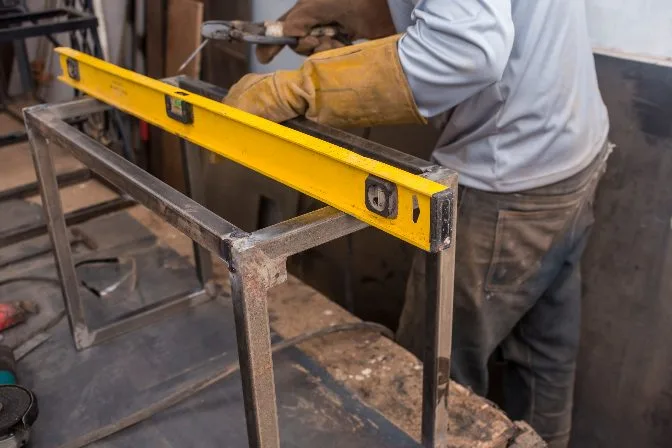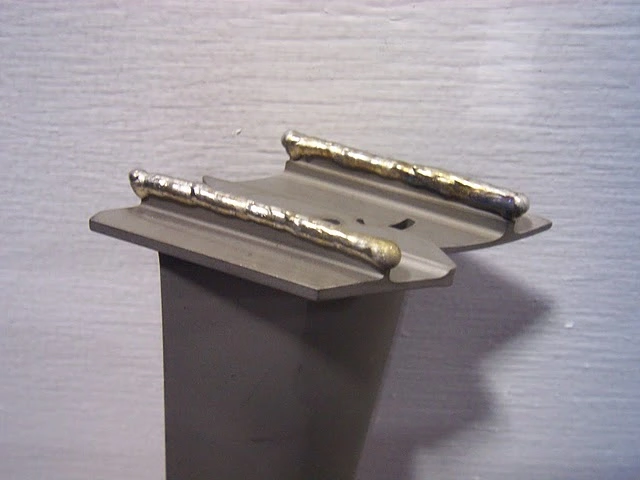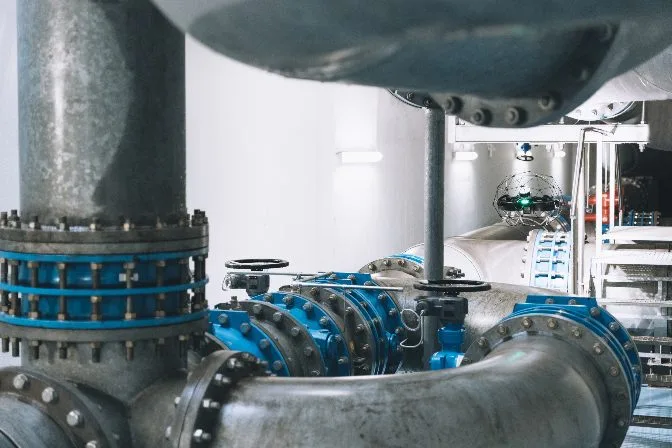Weld inspection is a critical process that ensures the quality, strength, and safety of welded joints. It involves a thorough examination of welds to identify any potential issues that could compromise their integrity. Trained professionals conduct inspections at various stages of the welding process—before, during, and after—to ensure that every weld meets the required standards. This helps maintain the structural reliability of fabricated components in industries ranging from construction to aerospace. Whether it's metal, thermoplastics, or other materials, welds are essential in countless applications worldwide. Proper inspection and maintenance are crucial to ensuring the safety of both workers and the general public. Welding is a manufacturing technique that uses intense heat to fuse two or more materials into a single, strong joint. The base metal is melted along with a filler material, forming a weld pool that solidifies into a durable connection. This process creates a bond that is often stronger than the original materials. Welds are used in a wide range of industries, including aerospace, automotive, construction, and shipbuilding. Welders and inspectors play vital roles in these sectors, ensuring that all welds meet strict quality and safety standards. Their work is essential for maintaining the integrity of structures and equipment that people rely on daily. Weld inspection is an ongoing process that spans the entire welding cycle. It starts before the weld is made, continues throughout the process, and concludes after the weld has been completed. This ensures that no faulty welds make it into the final product. Before welding, inspections help verify that all materials and tools are suitable and that the environment is safe. During the process, they monitor parameters like temperature and technique to prevent errors. Afterward, they check for defects and ensure compliance with industry standards. Regular inspections are especially important for high-stress welds, as they can degrade over time due to environmental factors or wear. These checks are part of broader safety protocols that protect both workers and the public. Welders face numerous risks, including burns, eye injuries, and exposure to harmful gases. Inspectors help mitigate these dangers by enforcing safety procedures and ensuring that only properly inspected welds are used in production. Most weld inspectors are certified by organizations like the American Welding Society (AWS), which sets the standards for training and qualification. Their expertise is essential in identifying and correcting issues before they lead to failures. Effective weld inspection should be conducted at all three stages of the welding process: pre-weld, during-weld, and post-weld. Before welding begins, inspectors check that all materials, tools, and safety measures are in place. They review blueprints, verify that the correct materials are available, and ensure that the workspace is clean and ready for use. While the weld is being made, inspectors monitor key factors such as heat input, travel speed, and joint alignment. They also look for signs of problems, like excessive spatter or uneven bead formation. After the weld has cooled, inspectors perform detailed checks to assess its quality. This includes measuring the weld size, checking for cracks or porosity, and conducting tests to determine its strength and durability. Various inspection techniques are used at each stage, some of which are explored in detail below. There are several common types of welds, each suited for different applications. Understanding them is essential for effective inspection and quality control. A butt joint is formed when two pieces of metal are joined edge-to-edge. This type of weld is commonly used in piping systems and large structures due to its strength and simplicity. In a lap joint, two overlapping pieces of metal are fused together. This method is ideal for joining materials of different thicknesses, particularly in sheet metal fabrication. A tee joint occurs when one piece of metal is welded perpendicular to another, forming a T-shape. This type of weld is often used in structural frameworks and pipe connections. A corner joint is similar to a tee joint but forms an L-shape instead of a T-shape. It is commonly used in boxes, frames, and shipping containers where two pieces meet at a right angle. Edge joints are used when the edges of two pieces are aligned parallel to each other. While not as strong as other types of welds, they are useful for reinforcing internal structures. Each of these joint types has variations and customizations, such as fillet welds, plug welds, and surfacing welds. Understanding the differences is crucial for accurate inspection and quality assurance. Even experienced welders can encounter defects that compromise the integrity of a weld. Identifying these issues early is essential to prevent failures and ensure safety. Some common faults include burn-through, corrosion, incomplete penetration, lack of fusion, lamellar tearing, porosity, slag inclusions, and undercutting. Each of these defects can weaken a weld and reduce its lifespan. For example, burn-through occurs when the base metal is melted completely through, creating a hole in the weld. Corrosion, on the other hand, can develop over time due to environmental exposure, leading to gradual degradation. Inspectors must be vigilant in identifying these issues using a combination of visual checks and advanced testing methods. Early detection can save time, money, and prevent serious accidents. Weld inspection techniques fall into two main categories: non-destructive and destructive. Non-destructive methods allow inspectors to evaluate a weld without damaging it, while destructive methods involve breaking the weld to analyze its internal structure. Non-destructive inspection (NDI) is widely used because it is cost-effective and preserves the integrity of the weld. Common NDI methods include visual inspection, liquid penetrant testing, magnetic particle testing, radiographic testing, and ultrasonic testing. Destructive testing, although less common, is necessary in certain cases to determine the mechanical properties of a weld. Techniques like macro etch testing, transverse tension testing, and guided bend testing provide valuable insights into a weld’s strength and ductility. Both types of inspection are critical for ensuring that welds meet industry standards and are safe for use in various applications. A well-structured inspection checklist ensures that all aspects of a weld are evaluated thoroughly. Below is a sample checklist that covers the key steps in pre-weld, during-weld, and post-weld inspections. Welders and inspectors use a variety of tools and equipment to ensure the quality and safety of their work. The choice of equipment depends on the type of weld, the environment, and the inspection requirements. Common tools include borescopes, flashlights, gauges, personal protective equipment (PPE), and radiograph machines. For complex or hard-to-reach areas, drones have become increasingly popular as an innovative inspection solution. Drones equipped with ultrasonic or LiDAR sensors can access tight spaces and provide high-resolution images of welds, making inspections faster and safer. This technology is especially useful in environments like oil tanks, mines, and underwater structures. Stainless Steel,316 Stainless Steel Pipe,Stainless Steel Pipes,5Mm Stainless Steel Plate Shandong Great Steel Co.,Ltd , https://www.great-steel.comWeld Inspection: A Comprehensive Guide
What Do Welds Do?
Why Is Weld Inspection Important?
The Three Stages of Weld Inspection
1. Pre-Weld Inspection
2. During-Weld Inspection
3. Post-Weld Inspection
Types of Welds
Butt Joint Welding
 Butt joint weld
Butt joint weldLap Joint Welding
 Lap joint weld | Source
Lap joint weld | SourceTee Joint Welding
 Source
SourceCorner Joint Welding
 Corner joint weld
Corner joint weldEdge Joint Welding
 Edge weld | Source
Edge weld | SourceCommon Faulty Welds
Types of Weld Inspection
Weld Inspection Checklist
Pre-Weld Inspection Checklist
During-Weld Inspection Checklist
After-Weld Inspection Checklist
Weld Inspection Equipment
 The Elios 3 drone inspecting water pipes
The Elios 3 drone inspecting water pipes